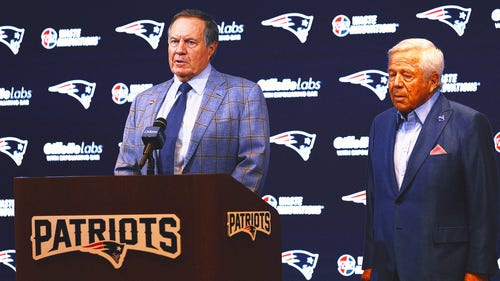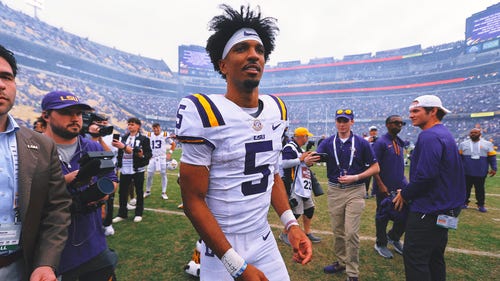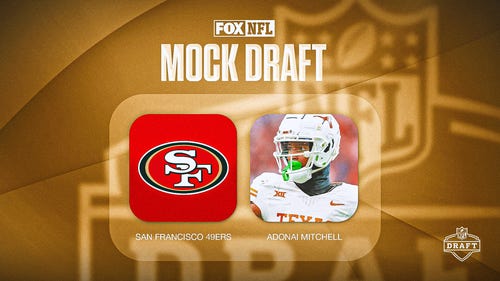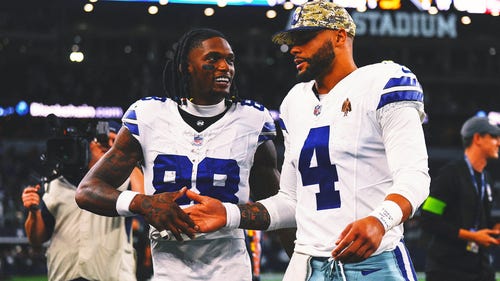
Eliminating kickoffs is wrong call
The NFL has been accused in the past of trying to turn the game into flag football. Does it really want to now lend credence to that by getting rid of an exciting, but sometimes dangerous, part of the game?
Reports have been flying this week that the NFL’s competition committee would look at the possibility of eliminating kickoffs in the name of player safety. In a recent Time magazine piece, commissioner Roger Goodell discussed a kickoff proposal with Rich McKay, the head of the committee, that would allow the kicking team the option of having a fourth-and-15 from its own 30-yard line rather than engaging in a kickoff play.
Are you kidding me? That’s a ridiculous proposal.
Goodell saw firsthand this weekend the impact that kickoffs have on games. While at MetLife Stadium, the commissioner watched the Giants earn a team record 287 yards on kickoff returns — including a game-changing touchdown early against the Saints.
With the game scoreless and New York driving, New Orleans returned an interception 73 yards for a 7-0 lead. Thirteen seconds later, the score was tied thanks to a David Wilson 97-yard kickoff return. In a manner of seconds, momentum swung to the Saints then back to the Giants — which helped them take the lead just five minutes later and ride that wave to a vital victory (as divisional rivals Washington and Dallas all won earlier in the day and are breathing down their necks).
This isn’t about the Giants alone. Sure, it benefitted them this week — but how many game-defining plays have happened during kickoffs this season? Last season? All-time?
Gale Sayers, Brian Mitchell, Devin Hester — these are some of the marquee names that changed games with their performances on kickoffs. Why would the league want to eliminate these types of players and plays?
I understand the league wanting to make the game safer. Kickoffs do create one of the most dangerous situations in the game as players collide at high speeds. But last year’s rule change helped. With kickoffs taking place from the 35-yard line rather than the 30, the percentage of kickoffs returned by the receiving team went down from 80.1 percent in the 2010 season to 53.5 percent in 2011, and concussions dropped 40 percent from 2010 to 2011 according to the NFL competition committee report. It’s a small sample size, but in today’s afternoon games we had 128 kickoffs and no major injuries that we saw.
There are many ways to make the NFL safer. Eliminating one of the most exciting parts of the game should not be one of them.
After sitting through 10 years’ worth of competition committee meetings, I think they will look at this proposal, roll their eyes, and move on to the next subject within minutes.
Your job is safe, David Wilson.
Here are some other plays that caught my attention on Sunday afternoon:
Chicago at Minnesota
Situation: The Vikings had the ball, second-and-8 on their own 31 with 4:42 remaining in the first quarter. Minnesota led 14-0.
The Play: Minnesota quarterback Christian Ponder drops back and has to scramble to avoid defenders. He is brought to the ground by defensive end Corey Wootton but throws the ball sideways and it appears the Bears recover it. However, Ponder is ruled to have been down before the throw, losing 14 yards on the sack.
My Take: There are certain sayings in the officiating world that are not in the rule book and never will be. One has to do precisely with this play. The saying is “Don’t let the quarterback do a bad thing when he is falling backwards on the way to the ground.”
Referees are told to rule forward progress or rule him down to prevent a cheap intentional grounding call or a fumble. That’s exactly what referee Walt Coleman did here. In some ways it’s for the protection of the quarterback, but it’s mainly to prevent the cheap penalty or cheap turnover. Besides, in this play it’s clear that Ponder’s progress was stopped and he was being driven backward before attempting to throw the pass.
Tennessee at Indianapolis
Situation: The Colts had the ball, third-and-3 on their own 39 with 4:56 remaining in the first half. The Titans led 10-7.
The Play: Colts quarterback Andrew Luck gets taken down by Titans defensive end Derrick Morgan, but he appears to throw the ball away just before getting sacked — and right into the hands of linebacker Will Witherspoon, who turns it into a pick-6. It is reviewed, but the play stands.
My Take: Based on the one television replay that I saw that came up after the commercial break, I’m surprised this call was not reversed to a sack.
The issue is when did this replay shot come up? We don’t know, because it was in commercial. At the game site, there are no commercials shown to the replay booth. While we’re at home watching ads, the booth is seeing multiple replay angles and making its decision.
Luck’s left knee was down and the ball was still in his hand. I know there has to be indisputable visual evidence to overturn a call made on the field, but it appeared to me there clearly was in this case. Even in replay, they’ll freeze the video when it shows a knee on the ground and the ball still in the passer’s hand.
Either they didn’t see the proper shot, or they didn’t feel it was enough to overturn. But in my mind, it clearly should have been overturned.
Dallas at Cincinnati
Situation: The Bengals had the ball, second-and-goal on the Cowboys’ 7 with 9:43 left in the third quarter. Cincinnati led 13-10.
The Play: Cincinnati quarterback Andy Dalton scrambles and finds receiver Marvin Jones in the end zone for a touchdown. A flag is thrown for an illegal touching of the pass, resulting in a five-yard loss and a replay of down.
My Take: Lesson learned from Tampa Bay — you can legally chuck a receiver out of bounds beyond five yards if the quarterback is out of the pocket. That’s precisely what happened here when Jones caught a pass for what appeared to be a touchdown.
Jones was chucked out over the end line, but it was well after Dalton had left the pocket therefore Jones was ineligible to be the first player to touch the ball after Dalton threw it. When he was indeed the first player to touch it, it created the five-yard penalty.
By the way, this is reviewable. If they had called it a touchdown and missed the receiver being out of bounds, they could have reviewed it and turned it into a penalty for an illegal touch.















































































































































